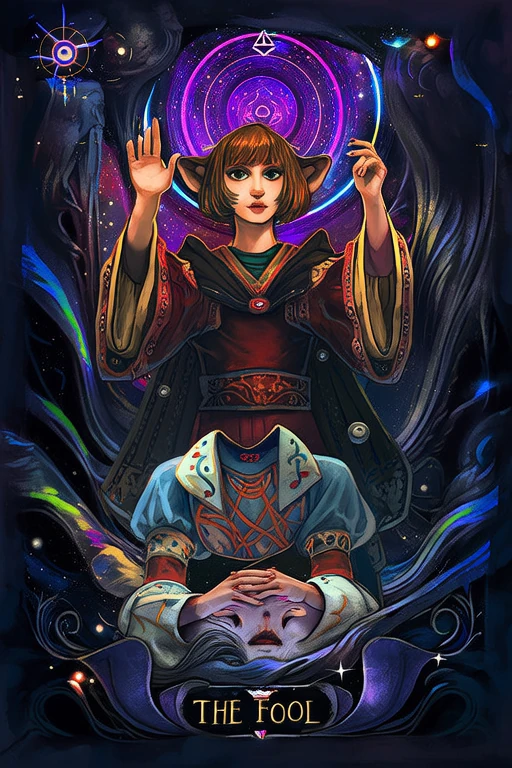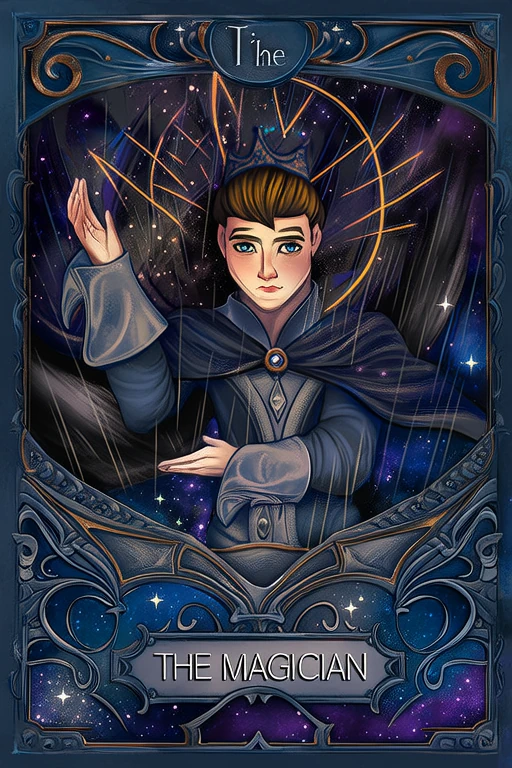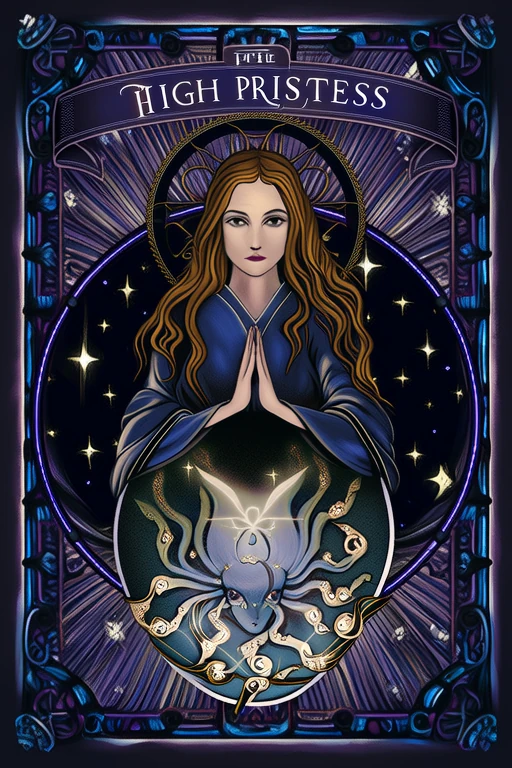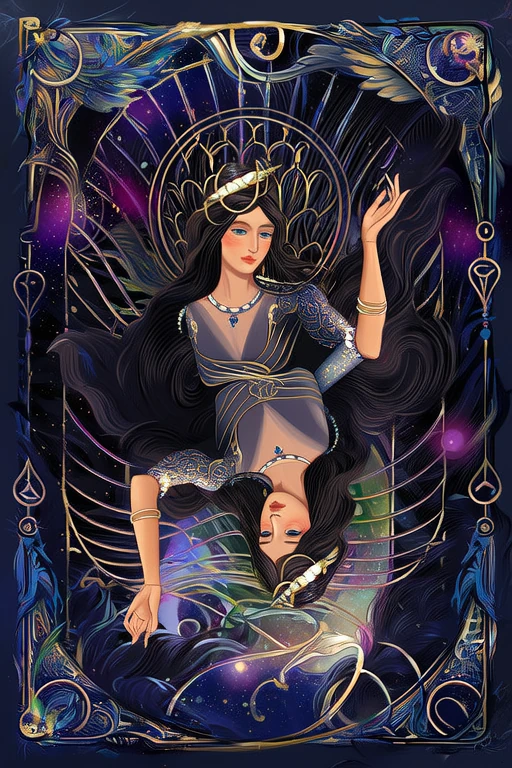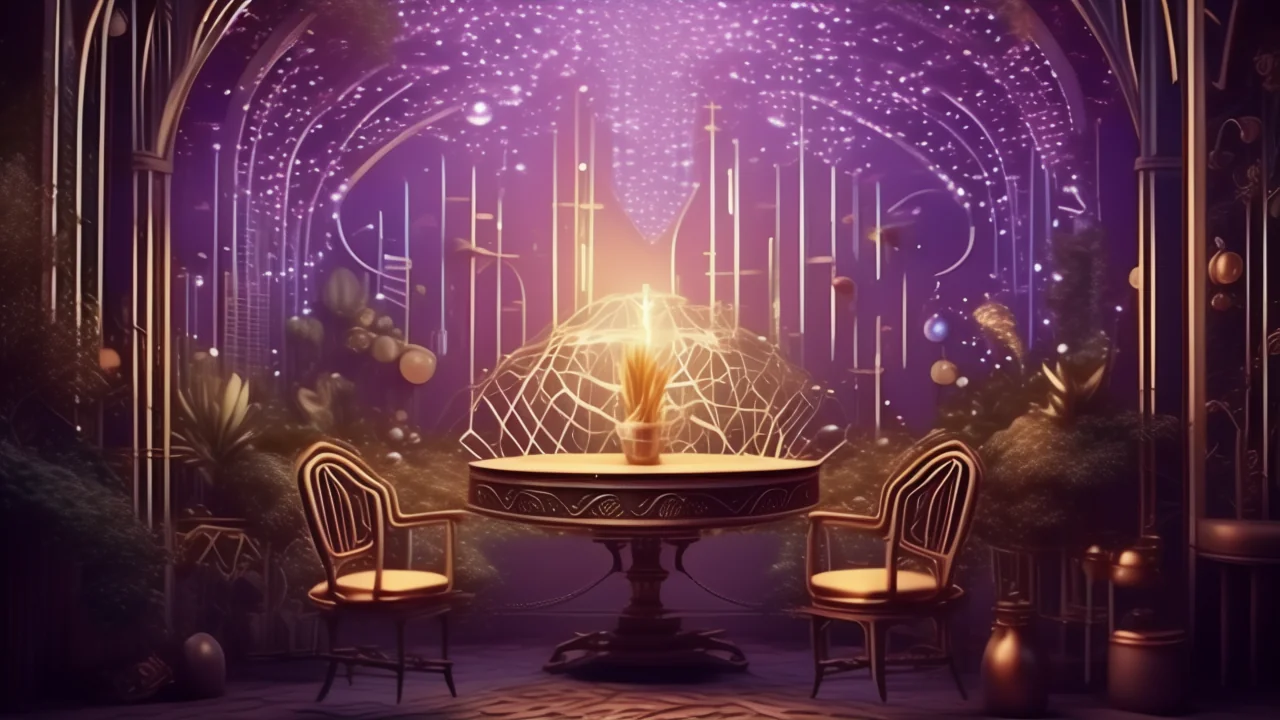
The Hanged Man
Discover the deep meaning of The Hanged Man with our free AI-powered tarot interpretation. Get instant, accurate readings based on advanced tarot knowledge.

Keywords
Upright Meaning
Surrender, letting go, new perspectives, enlightenment
Reversed Meaning
Stalling, needless sacrifice, fear of sacrifice
Full Interpretation
The Hanged Man represents surrender, new perspectives, and spiritual enlightenment.
In-Depth Analysis
📜 Historical Background
The Hanged Man, the 12th card in the Major Arcana of the Tarot, has a rich and complex history that traces back to the early development of tarot in 15th-century Europe. Originally used as playing cards, tarot decks began to take on symbolic and esoteric meanings during the 18th and 19th centuries, particularly through the influence of occultists like Eliphas Lévi and the Hermetic Order of the Golden Dawn. The earliest known depictions of The Hanged Man appear in the 15th-century Visconti-Sforza tarot deck, where the figure is often shown as a man hanging upside down, sometimes with one leg tied in a loop. This imagery was likely inspired by ancient myths and medieval symbolism related to sacrifice, martyrdom, and wisdom gained through suffering.
One of the most prominent mythological associations with The Hanged Man is Odin from Norse mythology. Odin famously hung himself from the world tree Yggdrasil for nine days and nights to gain the knowledge of the runes, a powerful act of self-sacrifice for enlightenment. Similarly, the Hindu god Shiva is sometimes depicted in meditative suspension, symbolizing transcendence and spiritual awakening. These themes of suspension, sacrifice, and transformation are central to the evolution of the card’s meaning.
Over time, the visual representation of The Hanged Man has evolved significantly. In many early decks, such as the Marseille Tarot, the figure is shown hanging from one leg with a serene expression, surrounded by a halo-like glow, suggesting divine wisdom. In contrast, more modern decks, such as the Rider-Waite-Smith Tarot, depict the Hanged Man suspended by one foot from a wooden beam, with his hands bound behind his back and a calm, almost meditative expression. This version has become the standard for most contemporary tarot imagery, emphasizing introspection and a shift in perspective.
Culturally, The Hanged Man has been interpreted in various ways. In some traditions, the card symbolizes betrayal, punishment, or even death, reflecting historical fears of public executions and the shame associated with hanging. However, in esoteric and spiritual contexts, it has come to represent a necessary pause, surrender, and the willingness to see the world from a different angle. In Eastern interpretations, particularly those influenced by Buddhism and Taoism, The Hanged Man is often associated with non-attachment, letting go of ego, and the path to enlightenment.
Throughout history, The Hanged Man has remained a powerful and enigmatic card, evolving from a symbol of fear and punishment to one of spiritual insight and transformation. Its journey through myth, art, and culture reflects humanity’s ongoing quest for wisdom, sacrifice, and the deeper understanding of life’s mysteries.
Symbolism & Imagery
The Hanged Man is a deeply symbolic card, rich in visual and conceptual meaning. At its core, the card represents a shift in perspective, surrender, and enlightenment through sacrifice. The central figure is typically shown suspended upside down, often with one leg tied in a loop or hanging from a wooden beam. His calm and contemplative expression suggests acceptance rather than suffering, indicating that this is not a moment of pain but of intentional stillness and reflection.
The act of hanging upside down is one of the card’s most striking visual elements. It symbolizes seeing the world from a different vantage point, challenging conventional thinking, and embracing a new way of understanding. This inversion suggests that the traditional logic or approach may not be effective, and that a pause or reversal is necessary for growth. The rope or beam from which the figure hangs represents the structure or belief system that supports this transformation. It is not a tool of punishment but of elevation—both physically and spiritually.
Colors play a crucial role in interpreting The Hanged Man. In the Rider-Waite-Smith tradition, the dominant colors are blue, gold, and green. Blue signifies wisdom, introspection, and depth, reinforcing the card’s theme of inner reflection. Gold represents spiritual enlightenment and the rewards of patience and sacrifice. Green, often seen in the background or clothing, symbolizes growth, renewal, and the natural cycles of life. These colors collectively suggest that The Hanged Man is not a negative card but one of necessary stillness before transformation.
Numerologically, The Hanged Man is the 12th card of the Major Arcana. The number 12 is associated with completion, spiritual order, and cosmic harmony. It reflects the twelve months of the year, the twelve zodiac signs, and the twelve apostles—each representing a cycle or system of understanding. In this context, The Hanged Man marks a turning point, a moment of reflection before the journey continues.
Across cultures, interpretations of The Hanged Man vary. In Western esoteric traditions, it is often linked to the concept of the Fool’s journey, where the soul must let go of control to attain higher wisdom. In Eastern philosophies, particularly in Buddhist and Taoist thought, The Hanged Man resonates with ideas of non-attachment, surrender, and the middle path. In some interpretations, the card is connected to the Norse god Odin, who sacrificed himself to gain mystical knowledge, reinforcing the theme of wisdom through sacrifice.
When drawn upright, The Hanged Man signifies a need for pause, reflection, and new perspectives. It encourages the querent to surrender control, embrace uncertainty, and trust the process of inner transformation. In reverse, the card can indicate resistance to change, impatience, or a refusal to see things differently. It may suggest that the querent is stuck in old patterns and needs to let go of rigid thinking.
In relation to other cards, The Hanged Man often follows The Devil, suggesting a release from material attachments or unhealthy patterns. It precedes Death, symbolizing the end of one phase before rebirth. Together, these cards form a powerful sequence of transformation, sacrifice, and renewal, highlighting the necessity of surrender before true change can occur.
Psychological Insights
From a psychological perspective, The Hanged Man is deeply connected to the process of inner transformation and self-awareness. In Carl Jung’s framework of archetypes, The Hanged Man resonates with the archetype of the Sage or the Wounded Healer—figures who gain wisdom through suffering, reflection, and detachment. The card symbolizes the need to step back from external distractions and engage in deep introspection. This aligns with Jungian concepts of shadow integration, where individuals must confront and embrace hidden aspects of themselves to achieve wholeness.
In modern life, The Hanged Man serves as a reminder that sometimes, the best course of action is to do nothing. In a world obsessed with productivity and constant motion, the card encourages a pause—a moment of stillness to reassess goals, relationships, and personal values. It is particularly relevant for those facing difficult decisions or feeling stuck in a situation where conventional solutions seem ineffective. The Hanged Man suggests that the answer may not come from pushing forward but from changing one’s perspective and allowing clarity to emerge through patience and surrender.
For personal growth, The Hanged Man is a powerful symbol of transformation. It teaches that true growth often requires letting go of control, releasing outdated beliefs, and embracing uncertainty. This can be particularly valuable in times of transition—whether in career, relationships, or spiritual development. By encouraging a shift in mindset, The Hanged Man helps individuals move beyond fear-based thinking and into a space of trust and intuition.
In therapeutic and counseling contexts, The Hanged Man can be a useful tool for exploring themes of stagnation, indecision, and resistance to change. Therapists may use the card to help clients recognize when they are clinging to old patterns or resisting necessary transformation. It can also serve as a guide for mindfulness practices, urging individuals to slow down, observe their thoughts without judgment, and cultivate a deeper understanding of their inner world.
In modern spiritual practices, The Hanged Man is often associated with meditation, shadow work, and energy healing. It invites practitioners to engage in reflective exercises such as journaling, breathwork, or guided visualization to gain insight into their subconscious mind. The card also supports the idea of surrendering to divine timing, trusting that the universe is guiding one toward growth even when the path is unclear. Whether used in tarot readings or spiritual reflection, The Hanged Man remains a profound symbol of wisdom, patience, and the transformative power of perspective.
Correspondences
The Hanged Man is deeply connected to the astrological sign of Neptune-ruled Pisces and, in some systems, to Aquarius. Pisces is a water sign associated with intuition, spirituality, and surrender—qualities that align perfectly with the essence of The Hanged Man. Neptune’s influence brings themes of illusion, transcendence, and the dissolution of boundaries, reinforcing the card’s message of letting go and seeing beyond the physical world. This planetary correspondence suggests that The Hanged Man often appears during times when the querent is being called to trust their intuition, release illusions, or undergo a spiritual transformation.
In terms of gemstones and crystals, The Hanged Man resonates with stones that enhance spiritual insight, intuition, and emotional release. Amethyst is a key stone associated with this card, known for its calming and protective properties, aiding in meditation and spiritual clarity. Labradorite is another powerful crystal, believed to enhance psychic abilities and help one see beyond illusions. Selenite is also linked to The Hanged Man, as it promotes mental clarity, spiritual alignment, and the release of stagnant energy.
Herbs and essential oils connected to The Hanged Man include lavender, mugwort, and sage. Lavender is known for its calming and balancing effects, making it ideal for meditation and reflection. Mugwort is traditionally used in dream work and spiritual journeys, aligning with the card’s theme of altered perception. Sage is used for purification and clearing negative energies, supporting the release of old patterns and emotional blockages.
Elementally, The Hanged Man is primarily associated with Water, reflecting its connection to emotions, intuition, and the subconscious. It also carries subtle Air energy, relating to mental clarity and perspective. The card corresponds to the season of late winter or early spring, a time of transition and inner preparation before new growth emerges. This seasonal association reinforces the idea of stillness before transformation.
In the chakra system, The Hanged Man is linked to the Crown Chakra (Sahasrara), which governs spiritual connection, enlightenment, and higher consciousness. Activating this chakra helps individuals align with divine wisdom and surrender to a higher purpose. The card also resonates with the Third Eye Chakra (Ajna), enhancing intuition and inner vision.
Numerologically, The Hanged Man is the 12th card of the Major Arcana. The number 12 is associated with completion, cosmic order, and spiritual cycles, reflecting the card’s role as a necessary pause before transformation.
❓ Frequently Asked Questions
The Hanged Man is one of the most misunderstood cards in the tarot, often raising questions and concerns due to its seemingly negative imagery. Below are some of the most frequently asked questions about The Hanged Man, along with clarifications and insights to help deepen your understanding of its meaning in readings.
**1. Is The Hanged Man a negative card?** Despite its ominous appearance, The Hanged Man is not inherently negative. It represents a necessary pause, surrender, and a shift in perspective. While it may indicate a period of uncertainty or delay, it ultimately encourages growth through reflection and acceptance rather than fear.
**2. What does The Hanged Man mean in love and relationships?** In a love reading, The Hanged Man often suggests a need for patience or a shift in how you view the relationship. Upright, it may indicate that you or your partner need to let go of expectations or gain a new perspective. Reversed, it could point to indecision, emotional stagnation, or a reluctance to move forward.
**3. What does The Hanged Man mean in career and finances?** In career readings, The Hanged Man often advises a temporary halt or reassessment. It may suggest that a project or job is not progressing as expected, and a new approach is needed. Financially, it can indicate a need to delay major decisions or reevaluate spending habits.
**4. Why do beginners fear The Hanged Man?** Many beginners associate The Hanged Man with literal hanging, punishment, or misfortune. However, its true meaning is far more nuanced. It is a card of spiritual insight, sacrifice for growth, and the necessity of surrendering control to gain wisdom.
**5. How should I interpret The Hanged Man in a reading?** When interpreting The Hanged Man, consider the context of the question and surrounding cards. Ask yourself: What needs to be released? What perspective shift is required? Is there a situation where patience is more beneficial than action?
**6. What spreads work best with The Hanged Man?** Three-card spreads and the Celtic Cross are particularly effective for exploring The Hanged Man’s message. In a three-card spread, it can represent the challenge, lesson, and outcome. In the Celtic Cross, its placement can indicate a need for reflection in a specific area of life.
**7. How does The Hanged Man interact with other cards?** The Hanged Man often follows The Devil, suggesting a release from material or emotional bondage. It precedes Death, indicating transformation after a period of surrender. When paired with The Fool, it reinforces the theme of embarking on a new journey with trust and openness.
**8. What practical advice can I take from The Hanged Man?** If The Hanged Man appears in your reading, consider taking a step back from the situation. Engage in meditation, journaling, or quiet reflection. Ask yourself what needs to be released or viewed differently. Trust that this pause is not a setback but a necessary part of your growth.
Practical Readings
Love Reading – Free • Online • AI • Instant • Accurate
In love, The Hanged Man upright: Surrender, letting go, new perspectives, enlightenment. Reversed: Stalling, needless sacrifice, fear of sacrifice.
Career Reading – Free • Online • AI • Instant • Accurate
For career, The Hanged Man upright: Surrender, letting go, new perspectives, enlightenment. Reversed: Stalling, needless sacrifice, fear of sacrifice.
Yes‑No Reading – Free • Online • AI • Instant • Accurate
As a quick yes‑no: upright tends toward “yes”, reversed leans “no”—interpret within your question’s context.
FAQ
What does The Hanged Man mean in tarot?
The Hanged Man represents surrender, letting go, new perspectives, enlightenment. This card encourages The Hanged Man represents surrender, new perspectives, and spiritual enlightenment.
What is The Hanged Man reversed meaning?
When The Hanged Man appears reversed, it signifies stalling, needless sacrifice, fear of sacrifice. Consider areas that may require adjustment or release.
Is The Hanged Man a positive card?
The Hanged Man is generally considered a neutral to positive card, representing surrender, letting go, new perspectives, enlightenment.
What should I do if I draw The Hanged Man?
If you draw The Hanged Man, focus on suspension, letting go, new perspective. Align actions with the card’s upright energy.
How do I interpret The Hanged Man in a love reading?
In love readings, The Hanged Man suggests surrender, letting go, new perspectives, enlightenment in relationships. Consider how suspension and letting go apply to your situation.
What does The Hanged Man mean in a love reading?
In love, The Hanged Man points to surrender, letting go, new perspectives, enlightenment when upright and stalling, needless sacrifice, fear of sacrifice reversed. Reflect on relational balance & authenticity.
How is The Hanged Man interpreted in career?
For career, The Hanged Man upright highlights surrender, letting go, new perspectives, enlightenment while reversed warns of stalling, needless sacrifice, fear of sacrifice—adjust planning & execution.
What is the financial meaning of The Hanged Man?
Financially, The Hanged Man suggests surrender, letting go, new perspectives, enlightenment potential; reversed indicates stalling, needless sacrifice, fear of sacrifice—use prudent pacing.
Is The Hanged Man a yes or no card?
The Hanged Man is generally a leaning YES when upright; reversed leans toward hesitation or NO—apply to the nuance of your question.
References
References
- Encyclopaedia Britannica – Tarot
Historical overview and cultural context of tarot cards.
- Wikipedia – Tarot
General reference on tarot history, structure, and usage.
- Biddy Tarot – Tarot Card Meanings
Widely cited interpretations and learning resources.
- Labyrinthos – Tarot Card Meanings
Educational articles on major and minor arcana.
